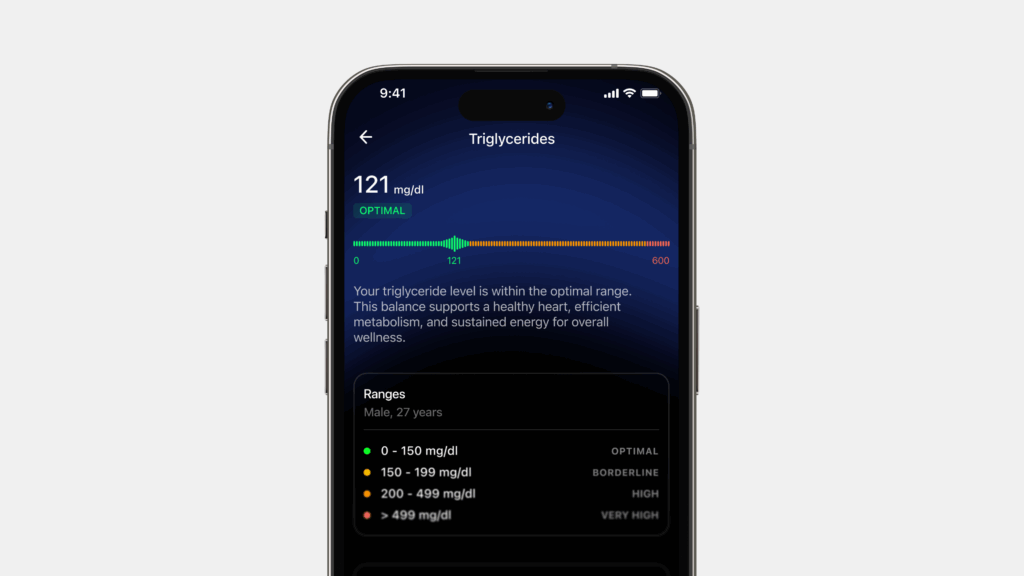If you’ve ever come across the terms insulin resistance and prediabetes, and you’re wondering what they are, or how the two are connected, you’re on the right page. We’ll be taking a deep dive into what both concepts mean and will break down everything from the causes, risk factors and symptoms for prediabetes and type-2 diabetes as well as their diagnosis. But first let’s understand what insulin resistance is.

Highlights
- Insulin resistance means that your body’s response to insulin is impaired, so the cells now have trouble absorbing glucose from the bloodstream. The pancreas tries to compensate for the resistance and maintain a healthy blood sugar level by producing more insulin. But if your pancreas cannot meet the increasing demand, sugar starts to accumulate in the bloodstream, leading to increased blood sugar,
- Symptoms are not easily detectable, so it’s quite possible to have insulin resistance and not know it,
- Left unchecked, insulin resistance usually leads to prediabetes and, eventually, diabetes. Prediabetes, as the name suggests, occurs when your blood sugar levels are higher than the normal range but not high enough to qualify as diabetes.
What is insulin resistance?
The carbohydrates you consume are broken down into glucose or sugar and released into the bloodstream. The hormone insulin helps the cells in your body absorb this glucose and use it as fuel for the whole body.
Insulin resistance means that your body’s response to insulin is impaired, so the cells now have trouble absorbing glucose from the bloodstream. The pancreas tries to compensate for the resistance and maintain a healthy blood sugar level by producing more insulin. But if your pancreas cannot meet the increasing demand, sugar starts to accumulate in the bloodstream, leading to increased blood sugar.
Insulin sensitivity, on the other hand, refers to the sensitivity of the body’s cells to insulin. Higher insulin sensitivity enables the body to absorb sugar from the bloodstream more effectively, thereby reducing blood sugar. Insulin sensitivity is the opposite of insulin resistance. While the exact cause of insulin resistance is not yet known, there are several factors that have been associated with the condition and are worth keeping an eye on.
Causes and risk factors
These include
- A consistently high-sugar, high-calorie diet,
- Obesity,
- A sedentary lifestyle lacking in physical activity,
- Chronic stress,
- Having PCOS (polycystic ovary syndrome) or Cushing’s disease,
- Taking a high dosage of steroids.
Certain people are also at more risk for developing insulin resistance. They include:
- People who have a family history of type 2 diabetes,
- Those with a personal history of gestational diabetes,
- People who are Hispanic, African-American, Native-American or Asian-American,
- People over the age of 45,
- Men whose waist circumference exceeds 40 inches and women whose waist circumference exceeds 35 inches,
- Those with a history of high blood pressure and high triglycerides.
The symptoms of insulin resistance are not easily detectable on the surface and usually occur only after you have developed prediabetes or type 2 diabetes. So it’s quite possible to have insulin resistance and not be aware of it. Let’s find out what you should be keeping an eye out for.
Symptoms
These include the following
- Increased thirst, hunger, exhaustion and blurry vision are all symptoms of prediabetes and type 2 diabetes. So if you have any of these along with high blood sugar, you might want to have it checked out by a medical professional,
- Dark patches on the neck, groin and armpits, called acanthosis nigricans, may also be a sign of prediabetes,
- ‘Pins and needles’ or a tingling sensation in the hands or feet.
So, does this sound a lot like prediabetes? Can these terms be used interchangeably? Let’s find out.
Insulin resistance and prediabetes
There is a thin line between insulin resistance and prediabetes. Prediabetes, as the name suggests, occurs when your blood sugar levels are higher than the normal range but not high enough to qualify as diabetes. People who have prediabetes usually already have insulin resistance, meaning, as discussed, their pancreas isn’t making enough insulin to keep their blood sugar within the normal range.
Science is still unclear on what causes insulin resistance and prediabetes, but the general consensus is that excess weight and lack of physical activity play a significant role.’
Switching to healthier foods, losing weight by increasing physical activity, quitting smoking, reducing sugar intake, including more omega-3 fatty acids and magnesium in your diet, lowering stress, intermittent fasting and getting adequate sleep can help the body respond better to insulin and delay or prevent the onset of type 2 diabetes.
How insulin resistance can lead to type 2 diabetes
As we’ve already seen, when you have insulin resistance, your pancreas works overtime to make more insulin and regulate your blood sugar levels. But this only works for a while because, after a point, the pancreas cannot keep up. So unless you make serious changes to your diet and exercise regimen, your blood sugar levels will continue to rise, paving the way for prediabetes. Additionally, untreated metabolic syndrome can lead to heart attack, stroke, kidney disease, eye problems, cancer and Alzheimer’s disease.

Diagnosis
Here below we discuss the steps your doctor would take to assess your situation and arrive at a diagnosis.
- Family’s medical history: You will be asked questions about your family’s medical history to gain a thorough understanding of your genetic predisposition.
- Weight and blood pressure: Your weight and blood pressure will be checked to see if they are within the normal range or if they could be contributing factors.
- Blood tests: You will be asked to get the following blood tests done:
Fasting plasma glucose test: This measures your blood sugar after meals for at least eight hours.
Oral glucose tolerance test: After the fasting plasma glucose test, you will be given a sugary solution to drink, two hours after which you will have to take another blood test.
Haemoglobin A1C test: This one shows your average blood sugar level for the past two to three months and is used in the diagnosis of prediabetes and diabetes.
At this point, your blood test results should be within the following ranges in order to be considered normal.
- Fasting plasma glucose test: 100–125,
- Oral glucose tolerance test: 140–199 after the second test,
- A1C results of 5.7–6.4 percent.
If you cannot manage your prediabetes, and your tests indicate counts higher than the aforementioned normal range, you will be diagnosed with type-2 diabetes.
Conclusion
Insulin resistance occurs when your body’s response to insulin becomes impaired. Over time, this leads to a build-up of glucose in the bloodstream, paving the way for prediabetes and, eventually, type-2 diabetes.
While the precise cause of insulin resistance is still unknown, there are a number of factors—like having a consistently high-sugar, high-calorie diet, obesity, chronic stress, PCOS, etc.—that have been known to contribute to the condition. There are also certain people, like those with a family history of type 2 diabetes and a personal history of gestational diabetes, those over the age of 45, and so on, who may be more at risk for developing insulin resistance.
Insulin resistance and prediabetes are almost interchangeable terms. Insulin resistance occurs when the sugar in the bloodstream is not being absorbed by the cells, fat and liver, and the pancreas isn’t able to produce enough insulin to keep blood sugar levels within the normal range. On the other hand, prediabetes occurs when blood sugar levels are higher than the normal range but not high enough to be considered diabetes.
The symptoms of insulin resistance and prediabetes are not easily detectable on the surface, although there are some common warning bells to watch out for. Once detected, serious dietary changes and a proper exercise regimen are a must. Else, one risks the condition invariably progressing to prediabetes and, ultimately, diabetes.
Disclaimer: The contents of this article are for general information and educational purposes only. It neither provides any medical advice nor intends to substitute professional medical opinion on the treatment, diagnosis, prevention or alleviation of any disease, disorder or disability. Always consult with your doctor or qualified healthcare professional about your health condition and/or concerns and before undertaking a new healthcare regimen including making any dietary or lifestyle changes.
References
- https://www.everydayhealth.com/type-2-diabetes/insulin-resistance-causes-symptoms-diagnosis-consequences/
- https://www.medicalnewstoday.com/articles/323027
- https://www.mayoclinic.org/diseases-conditions/prediabetes/symptoms-causes/syc-20355278
- https://www.aad.org/public/diseases/a-z/acanthosis-nigricans-treatment
- https://www.thediabetescouncil.com/does-pins-and-needles-sensation-means-you-have-diabetes/







